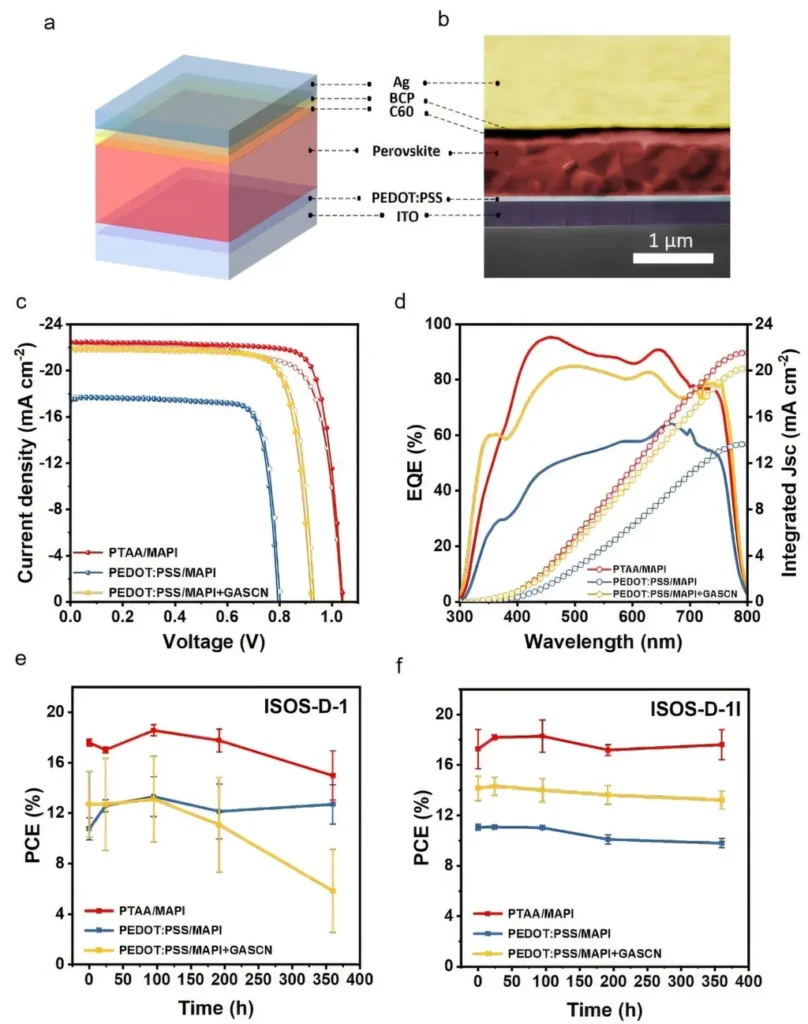In a significant stride towards more efficient and scalable perovskite solar cells (PSCs), researchers have developed a novel, binder-free electrode using pristine Ti3C2Tx MXene. This advancement, published in *Applied Surface Science Advances* (translated as “Advances in Surface Science and Applications”), addresses a critical challenge in the field: the trade-off between cost and performance in carbon electrodes.
The study, led by Harit Chunlim from the Department of Chemistry and Center of Sustainable Energy and Green Materials at Mahidol University in Thailand, introduces a simple yet effective solution-processing technique to apply Ti3C2Tx MXene directly onto the perovskite layer. However, the initial attempt revealed a significant hurdle: the direct interface between the untreated, hydrophilic Ti3C2Tx and the perovskite was unstable, leading to rapid degradation.
To overcome this, the researchers introduced a novel methylammonium iodide (MAI) surface treatment for Ti3C2Tx prior to deposition. This passivation strategy proved crucial in stabilizing the interface by neutralizing reactive surface groups. “The MAI treatment was a game-changer,” Chunlim explained. “It not only stabilized the interface but also significantly enhanced the fill factor and reduced the sheet resistance of the electrodes.”
The results were impressive. PSCs utilizing these MAI-treated, binder-free Ti3C2Tx electrodes achieved a power conversion efficiency of 13.8%, substantially exceeding the 10.7% efficiency of carbon controls. This improvement was primarily due to a significantly enhanced fill factor (75.2% vs 58.2%) and low sheet resistance. Moreover, these MXene electrodes maintained performance better than carbon when the active area was scaled up, demonstrating their practical potential for commercial applications.
While the hydrophilic nature of MXene requires encapsulation to ensure long-term stability in ambient conditions, this research charts an effective course for developing highly conductive, scalable, binder-free electrodes for advanced PSCs. The findings could pave the way for more efficient and cost-effective solar cells, potentially revolutionizing the energy sector.
As the world continues to seek sustainable energy solutions, innovations like these bring us one step closer to a future powered by clean, renewable energy. The research not only highlights the importance of addressing interface stability in solar cell design but also underscores the potential of MXenes in advancing solar technology. “This work opens up new possibilities for the development of high-performance, scalable electrodes for perovskite solar cells,” Chunlim noted, hinting at the broader implications of their findings.
In the quest for more efficient and affordable solar energy, this research marks a significant milestone, offering a promising path forward for the energy sector.

